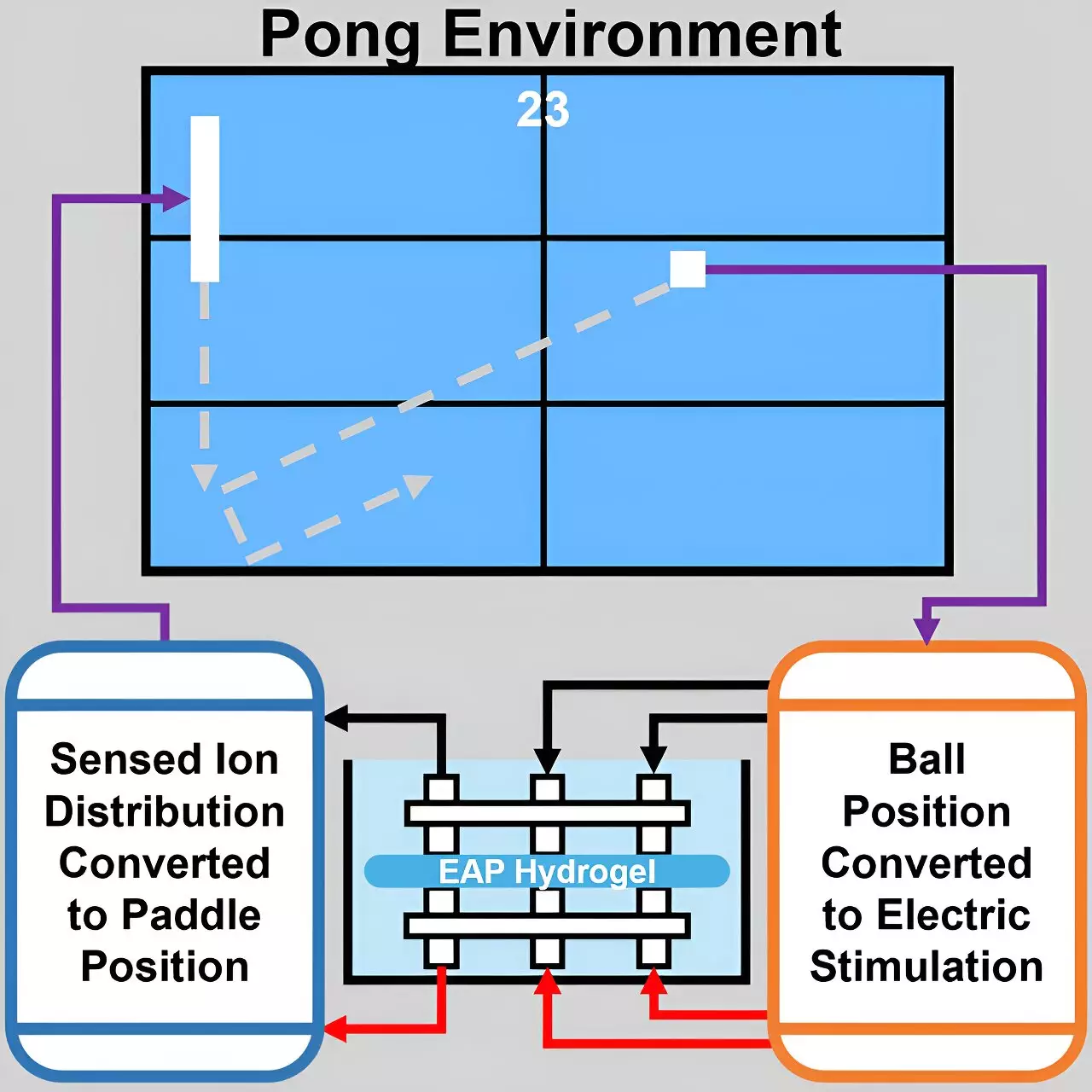Recent advancements in materials science spotlight hydrogels, a type of soft, pliable material, demonstrating that even the simplest forms of matter can emulate learning behaviors typically associated with advanced artificial intelligence (AI) or living organisms. Under the leadership of Dr. Yoshikatsu Hayashi at the University of Reading, a team of scientists showcased an innovative study published in *Cell Reports Physical Science*, illustrating that hydrogels could learn to play the retro computer game “Pong.” This exploration hints at a transformative potential for developing ‘smart’ materials capable of adapting and reacting to environmental stimuli.
The essence of this hydrogel’s learning capacity lies in the movement of charged particles when exposed to electrical stimulation. This complex interaction effectively creates a rudimentary form of memory embedded within the hydrogel. As articulated by Vincent Strong, a robotics engineer, the ionic hydrogels can mimic memory mechanics similar to those of neural networks, a foundational element in machine learning. This finding challenges conventional views of intelligence, suggesting that learning is not solely the domain of biological entities or sophisticated algorithms, but can also emerge from simple materials.
The researchers drew inspiration from prior studies where brain cells, when stimulated electrically, showed the ability to play Pong. Dr. Hayashi highlighted a vital query: Can uncomplicated artificial systems forge feedback loops comparable to those in biological entities? Both neurons and hydrogels rely on ion migration to function as memory systems, albeit through different mediums. Understanding this parallel offers a critical insight into how diverse systems can exhibit complex, adaptive behaviors.
Most current AI systems originate from neural network frameworks, but the hydrogel’s method of processing information offers fresh avenues for simpler, potentially more efficient algorithms. This exploration of hydrogel intelligence can lead to breakthroughs not only in AI but also in material science and robotics. As the study progressed, the researchers aimed to delve deeper into the mechanics that allow hydrogel memory to exist while testing different tasks, broadening our understanding of what constitutes intelligent behavior in materials.
Moreover, the implications of this research extend beyond gaming simulations. The hydrogels have the potential to redefine how we perceive intelligence in non-biological entities. The bridging of neuroscience, physics, and materials science could lead toward creating smarter and more adaptable materials, impacting various industries including healthcare, robotics, and environmental sensing.
In a related vein, Dr. Hayashi’s team has also pioneered research demonstrating that another type of hydrogel can synchronize its oscillations with an external pacemaker, an advancement not previously achieved with anything outside of live cells. This study, published in the *Proceedings of the National Academy of Sciences*, uses cyclic compressions to align the hydrogel’s chemical oscillations to a rhythm, a significant feat symbolizing the intersection of mechanical and chemical interactions akin to cardiac muscle contractions.
The implications of this breakthrough are profound; such hydrogels might serve as effective models for studying complex heart conditions such as arrhythmias, which afflict millions. Tools like these could potentially reduce the reliance on living subjects in medical experiments while enhancing our understanding of cardiovascular health. The findings may shed light on alternative management strategies for irregular heartbeats, advancing treatment options and opening up further investigative possibilities.
The convergence of learning and adaptation principles from hydrogels indicates that the foundations of intelligence and memory may be more universal than previously conceived. This research aligns with broader goals of innovation in soft robotics, environmental adaptability, and material science applications. As Dr. Hayashi aptly noted, such advancements present promising methodologies for redefining how intelligence is conceptualized within materials, potentially leading to breakthroughs in areas ranging from medical research to smart technology.
In light of this exciting trajectory, further exploration is warranted. Future efforts will focus on developing increasingly complex behaviors in hydrogels and investigating real-world applications that could reshape how we address challenges in science and engineering. This could ultimately bridge the gap between artificial and biological systems, ushering in a new era of intelligent materials that may transform numerous sectors and reduce our reliance on traditional biological models in research and treatment. The horizon for hydrogels represents not just a leap in material science, but the dawn of a new understanding of consciousness and adaptability in non-living entities.


Leave a Reply